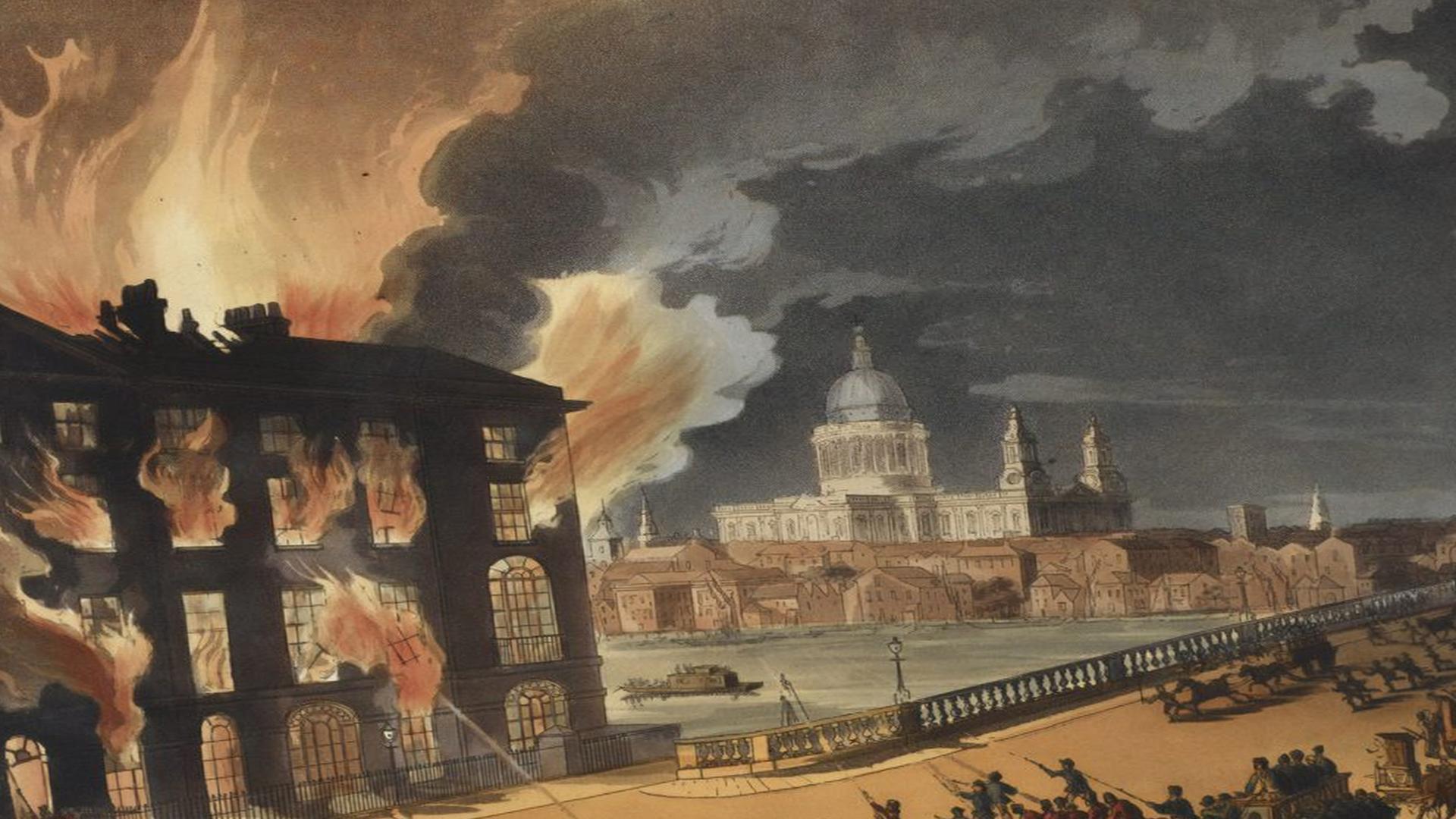
The Great Fire Of London
Aftermath
Hubert's confession was obtained under torture, and it later emerged that he had also confessed to starting the 1428 fire. He was tried for felony on 4 October 1666, and sentenced to death. Thereafter it became common knowledge that Hubert had confessed to the crime of arson, yet in spite of this he was financially supported by many Westminsters, who gave generously in an attempt to soften his sentence. During his imprisonment, Hubert was visited by many prominent figures such as diarist John Evelyn.
Hubert, in custody on a lesser charge, was tortured by having his thumbscrews tightened, My City of London (mycityoflondon.co.uk). He confessed to starting the Great Fire and was hanged at Tyburn. Londoners celebrated with bonfires after Hubert's execution. The final confession came when Hubert claimed that he had been hired by a baker, Thomas Farriner, who seems to have lost his bakery in the fire and wanted revenge on the King. He provided no proof of these allegations but publicly stated that he had started the fire at Pudding Lane.
Hubert was tried for the crime, and tortured until he confessed. His confession describes a plan to start the fire by burning waste near the bakery, and said that if someone had not come and extinguished it, the fire would not have started. Historian Robert Poole points out that Hubert was a well-known local lunatic in his native village of Pacy-sur-Eure, but the excitement of London caused him to lose his grip on reality and give a false confession.
Hubert's confession must be viewed in the context of the time. He was an easy scapegoat for a fire that had already killed many people, and that had destroyed large swaths of the city unknown to most Londoners. It is likely that Hubert would have been executed, by hanging if he had not confessed; moreover, his earlier claim of papal allegiance may have been elicited by torture. The Pope himself publicly exonerated Hubert before his execution for the fire.
Fire Hazards In The City
The fire started in a bakehouse in Pudding Lane in the early hours of 2 September 1666 and spread rapidly via the strong wind to the nearby docks. Houses were built close together with narrow, winding streets between them. London had expanded beyond its medieval walls into more than 100 suburbs. It had a population of 80,000 but there were only ninety fire extinguishers and no fire engine. The medieval street plan was very congested and most buildings were made from wood.
There were also no health codes so dirty thatched roofs, full of rubbish and not cleared for weeks could cause a blaze to spread easily. Find the closest underground or train station to your accommodation. Then find the zone of the station you want to travel to. If youre visitingLondon for sightseeing or to shop this will probably be zone 1. You’re planning to visitLondon for the first time, or you just moved there. But you’re not sure which zone of underground or train station your accommodation is in.
Monday
MONDAY, 3 SEPTEMBER. The fire was principally expanding north and west by dawn on Monday, 3 September, the turbulence of the firestorm pushing the flames both farther south and farther north than the day before. In an attempt to save his home, Deputy Chief Mike Dyer left his post at the command post on Lambert Road and went home to fight the fire. He was one of many firefighters to do so that morning; thousands abandoned their posts to help friends, relatives, or neighbors leave the fire area.
The fire had progressed to the north and west as far as Keene's Point, Lakeport, Geyserville, Cloverdale, and Healdsburg. Portions of Santa Rosa were also burning, including Luther Burbank Middle School on 3 September. Homes were reported burning in Kenwood and Hidden Valley Lake. The fire was "now moving at a rapid rate of spread through the Oakmont area of Oakmont. ". The photo of the firestorm taken from Newhall Pass above San Fernando at dawn on Monday, 3 September was one of the most famous of the San Fernando Valley fire.
The massively huge image (several miles across) was captured by Max Paglin, a firefighter and amateur photographer, and later distributed for free use to various news agencies and magazines, including Newsweek. By 9:00 am. the fire was estimated to have burned 23,000 ha (57,000 acres), an area one and a half times the size of the city of San Francisco. The entire city had been engulfed in smoke and ash leaving very little visibility. The main focus was shifting to Santa Rosa, as fires had begun to develop there early that morning.